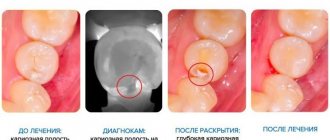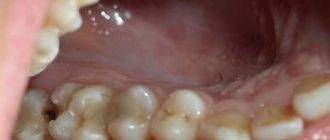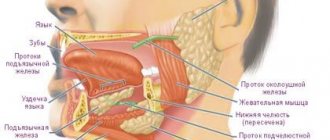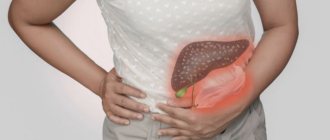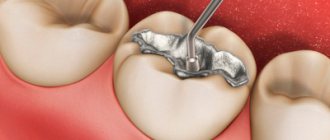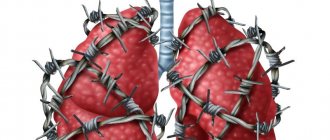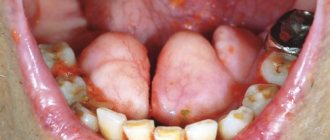Probably one of the most terrible pains a person can experience is toothache. When a tooth hurts, it is almost impossible to endure, and then even the most ardent dentist-hater goes to “surrender” to the doctor. But not everyone knows why teeth hurt and how to avoid these unpleasant sensations. Together with the dentist-therapist of the StilDent clinic, Elena Gennadievna ZIBNITSKAYA, we will look at the most common causes of toothache.
The most common causes of toothache are caries, pulpitis, periodontitis and pericoronitis.
Caries
This is a disease of the hard tissues of the tooth, leading to the destruction of enamel and dentin. First of all, caries affects the natural depressions on the teeth (fissures), as well as areas where plaque accumulates in large quantities - these are the interdental spaces and the gingival area. With caries, the hard tissues of the tooth demineralize and soften, and subsequently a defect in the form of a cavity forms on the tooth.
Caries has several stages, the process can be initial, superficial, medium and deep. At first, caries is almost asymptomatic - the main inconvenience that a person experiences is associated with food getting stuck in carious cavities. Another symptom of caries, which is usually not paid much attention to, is short-term pain from chemical, mechanical, and temperature irritants. Simply put, damaged enamel no longer protects the tooth from the effects of hot tea or ice water or from mechanical stress, and at this moment we experience pain. But because it only lasts a few seconds, we usually don't take it seriously.
When the process reaches the last stage - deep caries, the unpleasant sensations become difficult to ignore. With deep caries, the patient experiences pain when food and liquid enter the damaged area, pain when brushing teeth (irritation from paste and brushes), pain from any external irritants, temperature, chemical, mechanical. Once the irritant is removed, the pain subsides until the next episode. At this stage, the quality of life is already significantly reduced. But if a person continues to stubbornly endure and does not go to the doctor, the nerve of the tooth (pulp) is gradually involved in the inflammatory process, and pulpitis begins.
Why does a dead tooth hurt suddenly?
Many people believe that a dead tooth cannot hurt? But what does the expression “dead tooth” mean? This is a tooth with dead or removed pulp. Yes, due to periodontitis, the nerve dies, but remains inside the pulp, which is why it begins to decompose over time. From there, the pus goes to the root, causing the surrounding tissue to become inflamed. This is how acute pain occurs.
There are several reasons why a dead tooth becomes especially sensitive (due to complications) before and after treatment:
- Low-quality treatment and cleaning of dental canals;
- Medical violations when placing a filling: the edges of the filling extend too far beyond the root;
- Not all tooth canals have been cleaned, some of them are missed or not completed;
- Allergy to the material from which the filling is made
It is important to understand that tooth disease after treatment is a normal and natural process. It is called post-filling syndrome, which lasts for several weeks (1-2). If it really is him, then the pain will weaken every day. However, if the pain does not disappear and even increases daily, then this is a significant reason to repeat the appointment with the doctor.
SIGN UP ONLINE
Pulpitis
This is an inflammation of the pulp (nerve) of the tooth, the process is usually accompanied by acute pain. Pulpitis occurs as a reaction to constant exposure to irritants that enter the pulp through a carious cavity, as well as due to the influence of microorganisms and toxins on the nerve of the tooth. Irritation of the pulp leads to a change in blood flow, which provokes increased pressure on the nerve fibers.
At the initial stage, pulpitis manifests itself as mild pain, which goes away when the irritant is removed. At this stage, the inflammation goes away on its own if the irritant is removed - that is, caries is cured and the tooth is filled, isolating the pulp from external influences.
If you do nothing, the inflammation gradually intensifies and the pain increases. The stage of acute pulpitis begins, irreversible changes occur in the pulp. Pain is easily caused by any irritant. The “don’t eat, don’t drink, keep your mouth closed” option doesn’t save you from pain. Very often, toothache worsens at night.
Pain in acute pulpitis can be very different:
- Sharp or blunt
- Pulsating or constant
- Localized or spilled
- Short or long term
If you continue to ignore your condition and do not consult a dentist, then the next stage is complications that are likely to develop with acute pulpitis, including purulent pulpitis.
Diagnosis of toothache. Features of complications in the absence of treatment
The correct diagnosis can only be established after examining the oral cavity. The dentist must analyze complaints, obtain information about concomitant ailments, previous injuries and find out the nature of the pain. Then prescribe adequate treatment
A visual examination by a doctor may include the following manipulations:
- applying light tapping movements to the tooth to determine the location of the pathology;
- determining the reaction to exposure to heat;
- examination of the condition of the enamel using a special lamp or laser;
- study of the condition of dentures, if any;
- X-ray diagnostics to identify foci of inflammation, root fractures and other hidden problems;
- 3D computed tomogram, which allows you to obtain a three-dimensional model of an organ, view the internal structure of the bones, identifying neoplasms and cysts.
CT scan.
Network of dentists “Smile”, Shchelkovo Whatever the toothache is - severe, low-intensity, nagging, sharp, appeared today or has been lasting for several days - make an appointment with a dentist. Even if the pain has subsided and does not manifest itself at all, you cannot cancel the visit. Some insidious diseases (such as pulpitis) can behave changeably: after a sudden exacerbation, some relief may occur. However, you should not wait for the next attack or hope that the disease has gone away on its own and the pathological process has stopped.
Note! Before visiting the dentist, do not take medications that relieve pain - analgesics (tablets, injections). This will blur the symptoms, and it will be difficult for the doctor to make a diagnosis, not to mention the correct treatment regimen, due to the dulling of symptoms by painkillers.
Chronic pulpitis
In the most patient patients, acute pulpitis can become chronic. The pain becomes less acute and constant, sometimes subsides for a long time. If the carious cavity is difficult to access by irritants, chronic pulpitis can be almost painless.
Symptoms of chronic pulpitis
- Pain in the cold
- Pain when eating hot food
- Pain during temperature changes (for example, when you leave the house on a cold street)
- Prolonged aching pain if the carious cavity is clogged with food debris
Chronic pulpitis can worsen at any time and give you all the unforgettable sensations of acute pulpitis.
If chronic pulpitis is not treated, it can develop into periodontitis.
Why does the jaw and cheekbones cramp?
When your cheekbones and jaw cramp, and aching pain appears after an attack, you should immediately consult a doctor. Simultaneous reduction of the jaw and cheekbones can be caused by serious pathologies:
- severe deficiency of blood supply - dizziness, deterioration of memory, vision, decreased mental activity, numbness of the extremities occurs;
- hypertensive crisis - heaviness in the chest, shortness of breath, numbness of the limbs and loss of sensitivity in the fingertips;
- tonsillitis – sore throat, difficulty swallowing;
- oncological disease of the ENT organs - stuffy ears, convulsions occur.
The cheekbones on the face are cramped for completely harmless reasons, for example, due to frequent yawning. But it’s better to play it safe and get examined by a specialist so that, if necessary, you can start therapy at an early stage of the disease.
Acute periodontitis
Periodontitis is an inflammatory process in periodontal (periodontal) tissues in the area of the apex of the tooth root. Often, inflammation involves the cementum and dentin of the tooth root, as well as the alveolar bone. Periodontitis in most cases occurs due to damage to the pulp, that is, pulpitis.
Symptoms
- The pain is constant, throbbing, with clear localization
- The pain intensifies from any touch to the tooth, including when chewing
- Pain may spread to part of the face
- Headache
- General weakness
- Temperature increase
- Cheek swelling
- Pain in the gum, redness and swelling in it
- Submandibular and chin lymph nodes are enlarged
- Possible discharge of pus from the root canal
Medication treatment at home
Dentists consider the use of special gels, rinses, and toothpastes with or without very mild abrasives to be effective treatment at home.
When treating hypersensitivity, potassium nitrate is recognized as the most effective remedy. The therapeutic effect when using hygiene products that contain it occurs as a result of the penetration of potassium ions into the dentinal tubules, where they accumulate, surround the nerves in the pulp areas of the tubules and block their activity, thereby reducing the excitability of the nerve endings.
To achieve the effect, it is recommended to maintain a high concentration of potassium nitrate on the surface of the causative tooth or group of teeth. Potassium nitrate can be used as a solution, gel, paste, or other oral hygiene products.
When using toothpastes containing potassium nitrate or chloride and sodium monofluorophosphate, as when using potassium nitrate alone, hypersensitivity to tactile stimuli and cold air is reduced.
If, after two weeks of daily use in the morning and evening, the therapeutic effect of brushing teeth and applying products containing the substance is not observed, then the patient is recommended to wear mouth guards. They are filled with the same compositions and worn at night. Symptoms of hyperesthesia disappear after two weeks.
Also, positive dynamics in home therapy for hypersensitivity are shown by hygiene products that contain fluorides, strontium salts (chloride or acetate), calcium glycerophosphate or hydroxyapatite.
Please rate this article
Stanislav Mezheritsky
Chief physician, surgeon, orthopedist
The author of the article is Stanislav Mezheritsky, a practicing dentist with 19 years of experience, chief physician and one of the founders of the Matisse Dent clinic. The main focus is orthopedic and surgical dentistry. Author of numerous publications, regular participant in specialized seminars.
Chronic periodontitis
Chronic periodontitis sometimes develops asymptomatically, or acute periodontitis can progress to this stage. Chronic periodontitis develops when the pulp dies, and favorable conditions are created in the tooth for the development of microorganisms. Sometimes chronic periodontitis can appear after a tooth injury.
Symptoms
- Changing the color of tooth enamel
- The presence of a fistula on the gum
- Painful sensations when chewing solid food
Chronic periodontitis can have many very serious complications: granuloma, root cyst, pathological fracture of the lower jaw, periapical abscess, phlegmon and others.
What to do if your jaw and teeth are cramping
Once the diagnosis is established, complex therapy begins, aimed at eliminating the cause of the pain. Treatment tactics depend on the nature of the pathology:
- A dislocated jaw must be set, and if a fracture occurs, emergency surgery must be performed.
- If the cause of spasm of the jaw muscles is a disease of the cardiovascular system, it is necessary to undergo comprehensive treatment under the supervision of a cardiologist.
- If pain in the jaw occurs due to a dental disease - deep caries, pulpitis, periodontitis - antibacterial therapy may be needed. The diseased tooth will either be removed or filled.
If your jaw is cramped from overexertion and stress, you need to temporarily protect yourself from nervous situations. A relaxing massage and infusions of soothing herbs are recommended. In case of severe pathology, the doctor may prescribe a sedative; in case of severe pain, anesthetic drugs are used.
If it is known for sure that the jaw is cramped due to psychopathology, you can do various baths and compresses (not hot) before going to bed to relax the facial muscles and normalize the general condition of the body.
Jaw pain is a serious symptom that requires a comprehensive examination and the use of effective therapeutic treatment methods. If you treat not the cause of the disease, but the symptoms, irreversible changes in the body may occur.
Pericoronitis
This is difficult eruption of wisdom teeth (eights). When a tooth cannot erupt normally, inflammation of the surrounding soft tissue and periosteum behind the dental socket begins. Inflamed gums are constantly injured when chewing, which further aggravates the process.
The inflammatory process can gradually lead to the development of purulent pericoronitis.
Symptoms:
- Constant pain that gets worse when chewing
- Pain radiates to the ear and temporal region
- Pain when opening the mouth
- Enlargement and tenderness in the submandibular lymph nodes
- Sharp pain when pressing on the gums, purulent discharge is possible
- Increased body temperature
In the future, the pain continues to intensify and the body temperature rises. The patient's health deteriorates significantly, and retromolar periostitis may develop.
Diagnostic measures
The success of treatment depends on the quality of diagnosis. First, you need to understand why your jaw is cramping, and only then begin therapy aimed at eliminating the underlying disease and unpleasant symptoms. Diagnosis of jaw pain includes a number of actions:
- standard dental examination;
- questioning the patient about the location, duration, intensity, regularity and time of occurrence of pain (only during sleep or exclusively during the daytime);
- general blood and urine analysis;
- X-ray of the skull and problem area of the jaw;
- CT scan;
- MRI of the head and cervical spine.
Further examination is prescribed depending on the situation. If the research reveals pathologies other than dental ones, the patient will be referred to the appropriate specialist:
- jaw surgeon;
- neurologist;
- cardiologist;
- traumatologist
Doctor's advice
Prevention of hyperesthesia will include the following:
- Avoid using whitening pastes. These pastes contain high abrasive particles, which, when exposed to friction from the brush, destroy the surface layer of enamel. If the patient wants to whiten the enamel, it is better to seek professional whitening at a dental clinic.
- Reduce (or better yet eliminate) the consumption of juices/carbonated drinks. The acids contained in these drinks destroy enamel, causing not only tooth hypersensitivity, but also caries and wedge-shaped defects.
- Visiting the dentist once every six months for a preventive examination and timely treatment of caries, wedge-shaped defects, etc.
